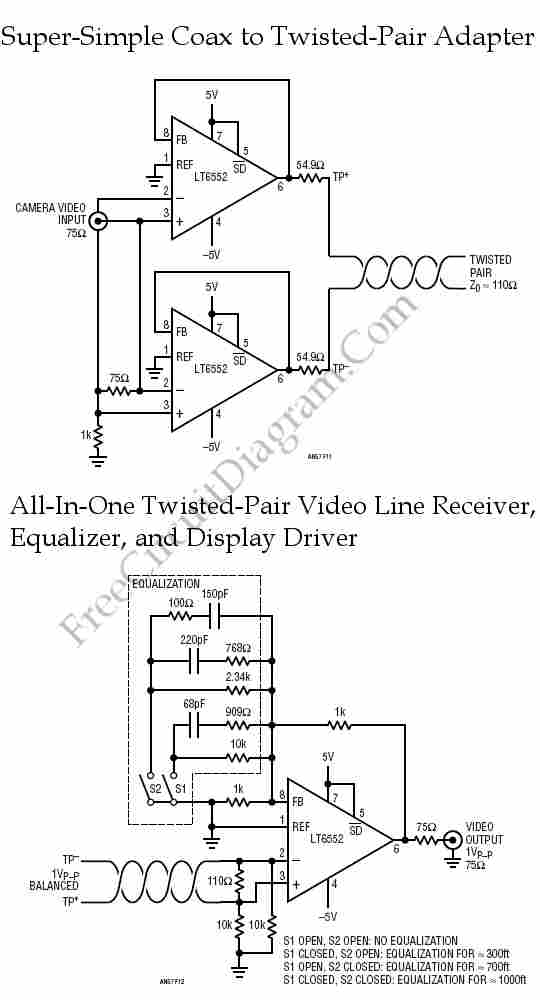Twisted-Pair Video Cable Driver and Receiver

Twisted-pair wiring is a wiring technique that usually used for in-building data communication. Compared to conventional coaxial-cable, this technique offers substantial cost saving, for video transmission on the same medium. A differential driver is used to launching a baseband camera signal to twisted pair.
Twisted pair exhibits a roll-off characteristic that need equalization to correct for. The differential driver and the corrector circuits are shown on figure below:

This differential driver uses two LT6652, one is used to create a gain of +1 and another is used to make a gain of
–1. Besides that, LT6652 is used to reject any ground noise and prevent ground loops via the coax shield. The signal is terminated and re-amplified to re-create an unbalanced output for connection to recorders, display monitors, etc when the signal at the receiving end of the cable. The amplifier must provide the 2x gain required output drive and make up for the losses in the cable run. [Circuit diagram source: Linear Technology Application Notes]